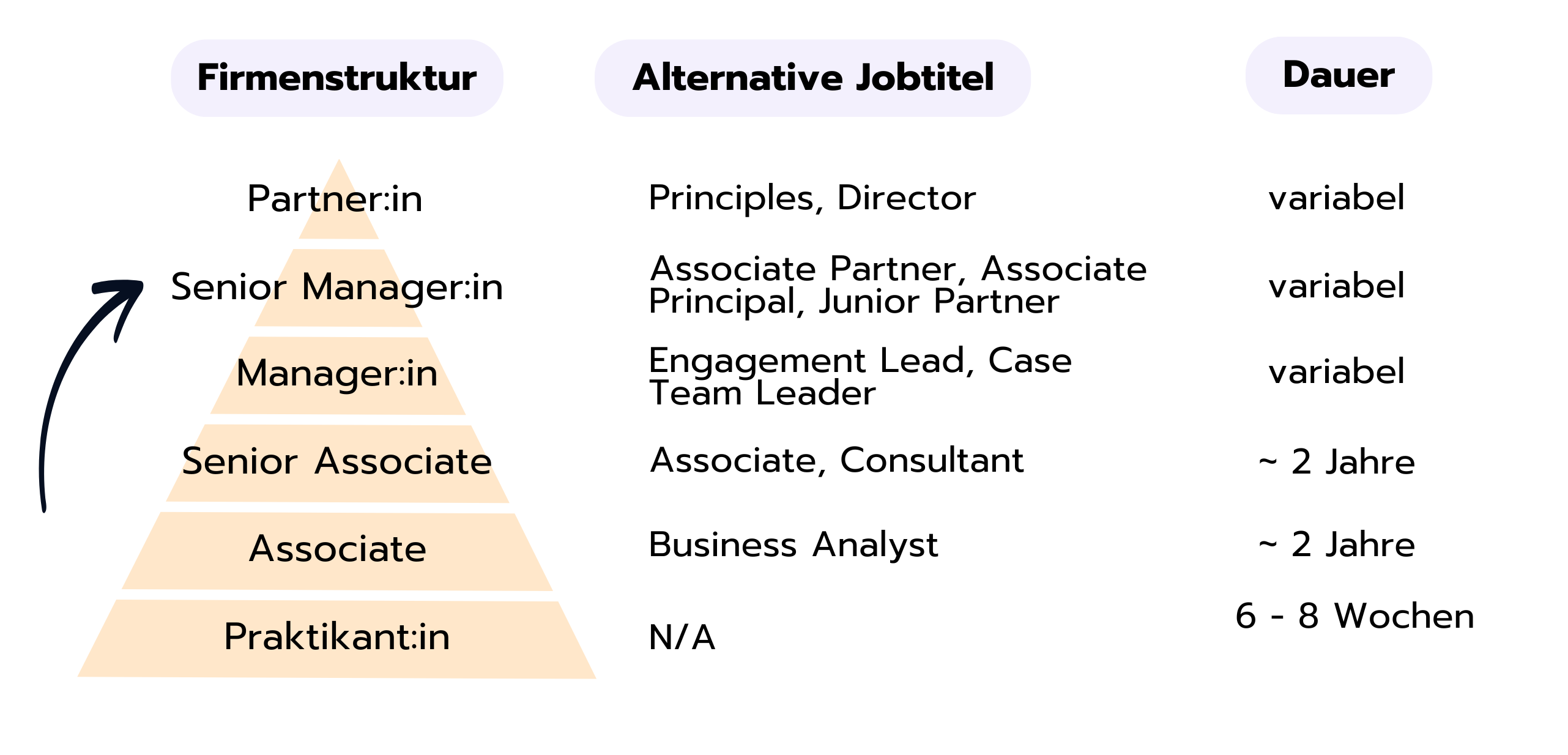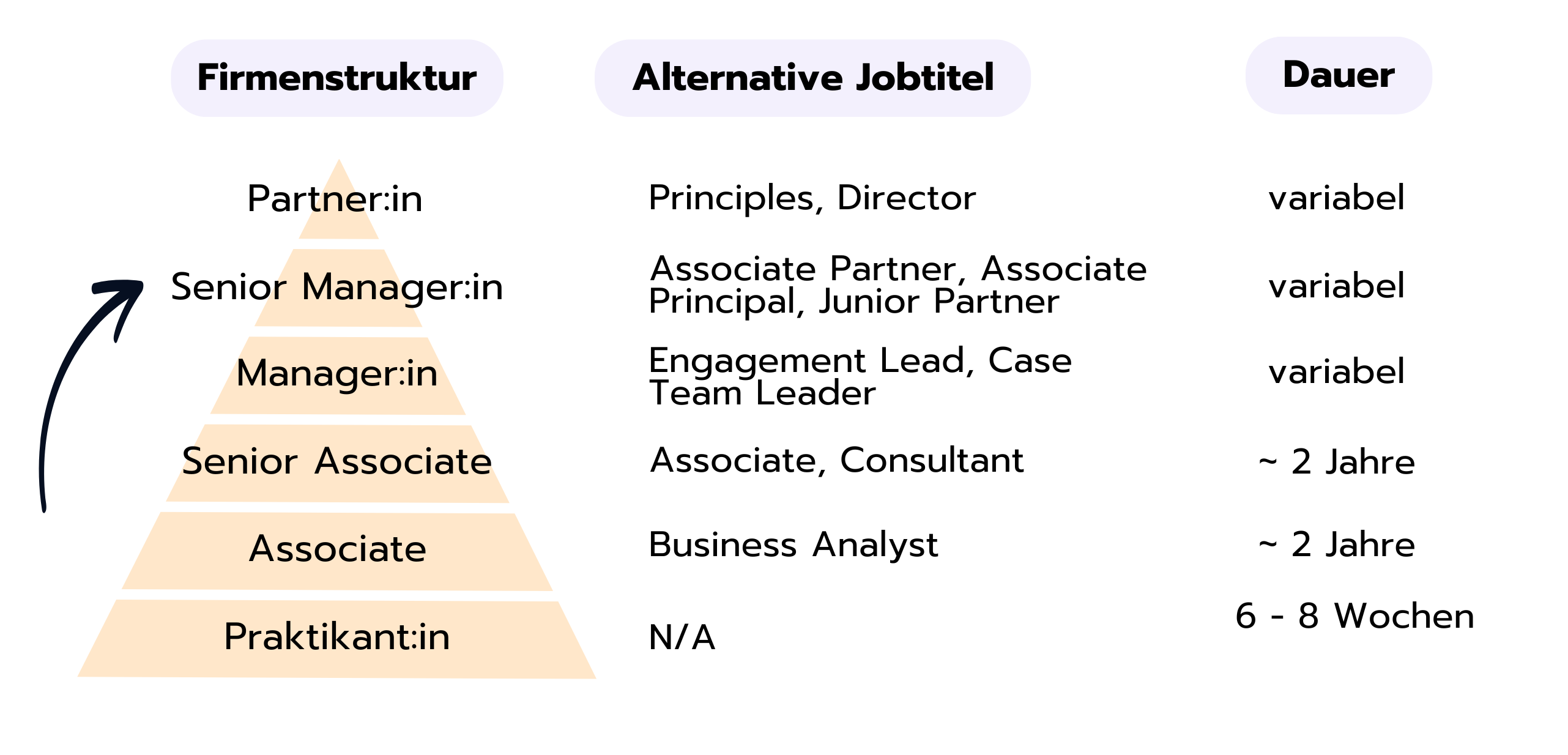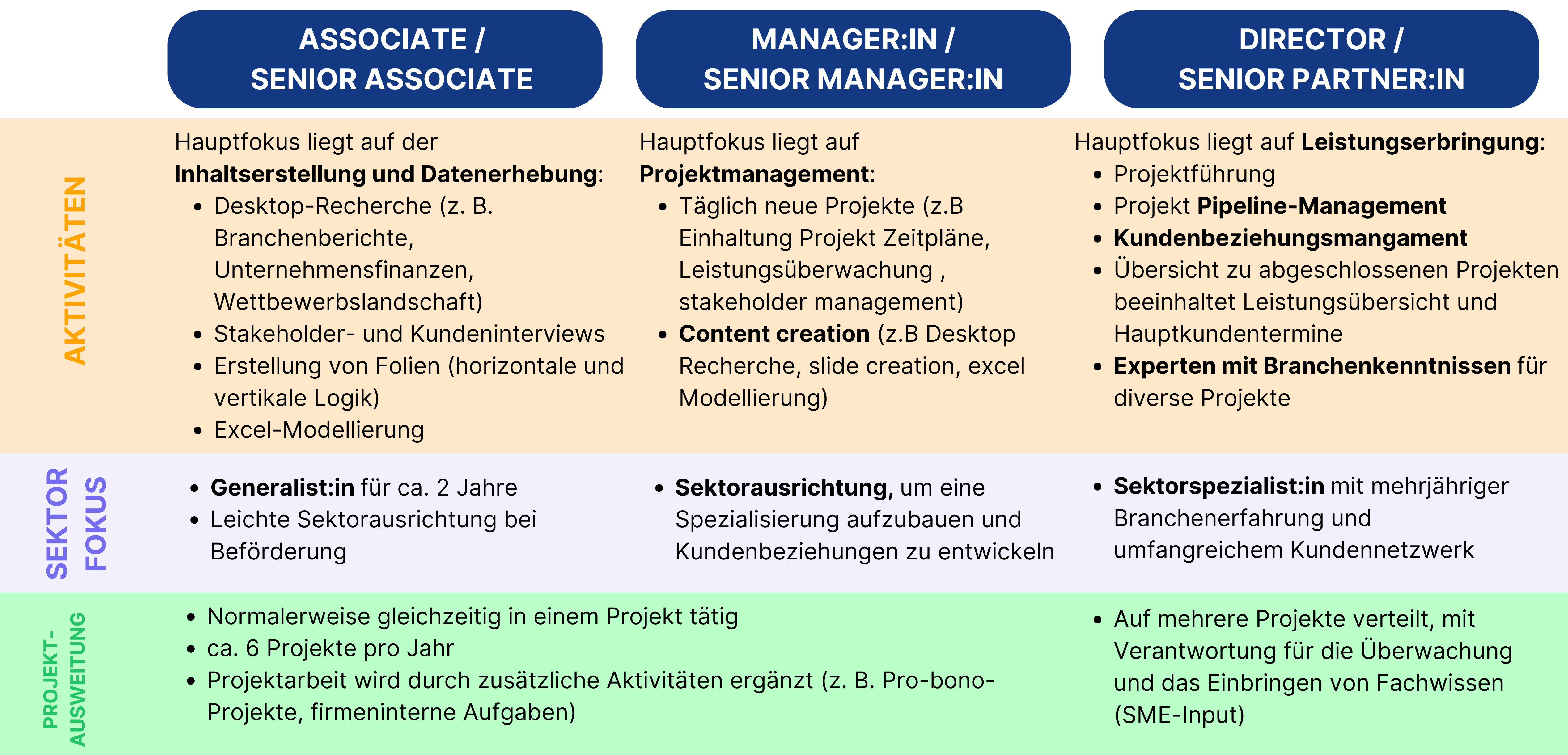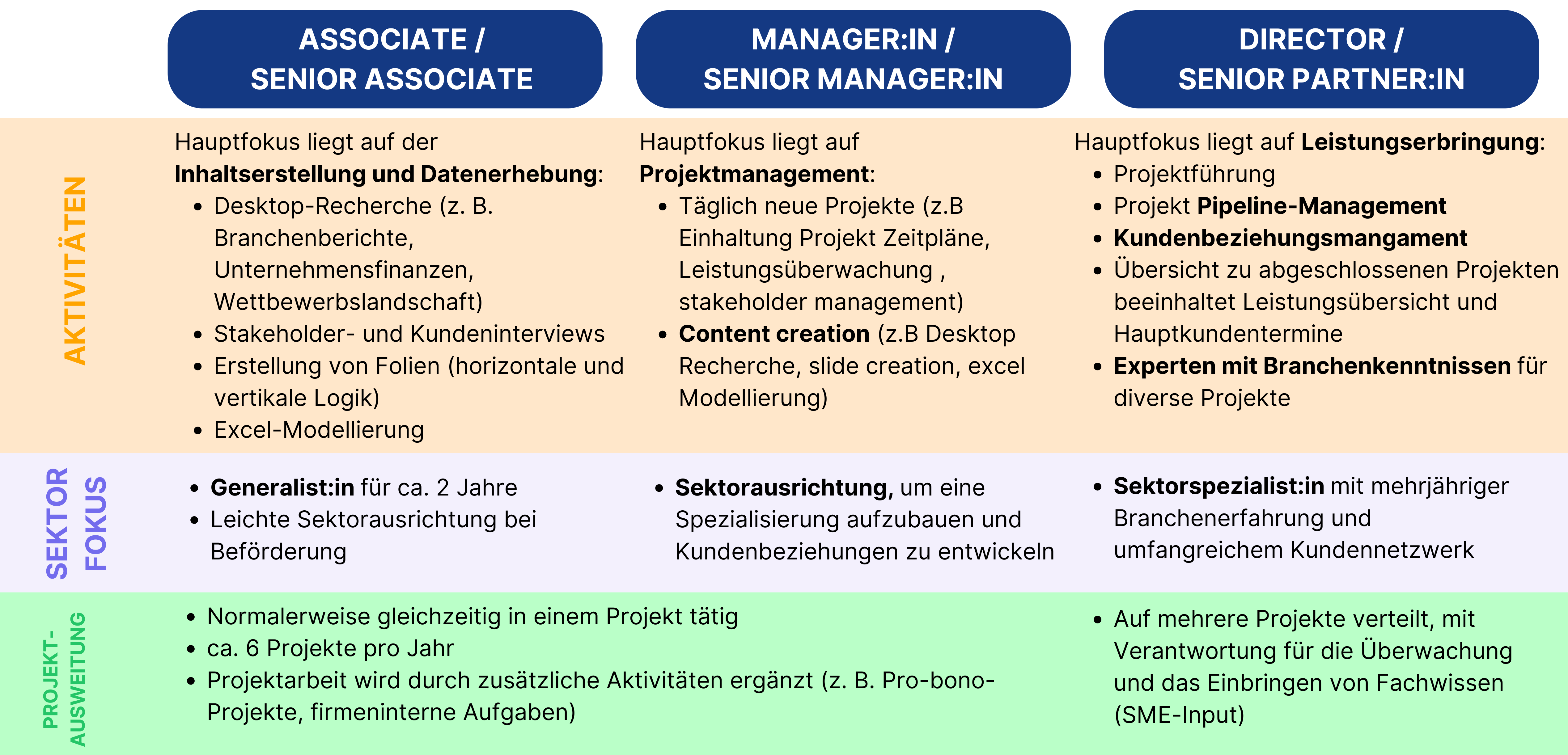Die Unternehmensberatung hat den Ruf, exzellente Karrieremöglichkeiten zu bieten. Viele Consultants bleiben ihr ganzes Berufsleben lang in dieser Branche, andere nutzen sie als Sprungbrett, um in weitere spannende Industrien und Bereiche einzutauchen.
💡 Dieser Artikel befasst sich mit der Organisationsstruktur von Beratungsunternehmen, den Rollen und Verantwortlichkeiten auf jedem Karrierelevel, den Gehaltserwartungen und den Exit-Möglichkeiten, die die Consulting-Branche bietet.











